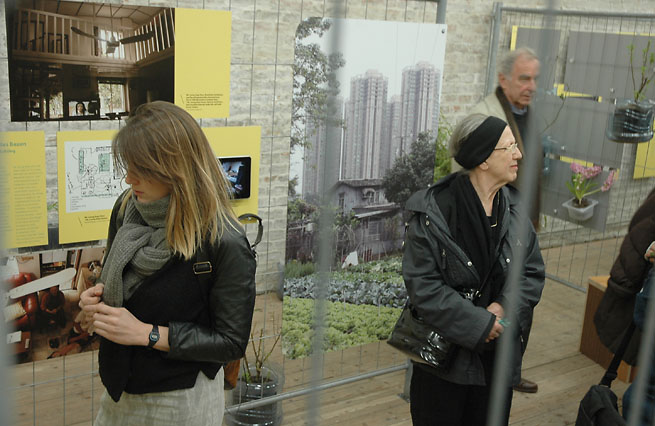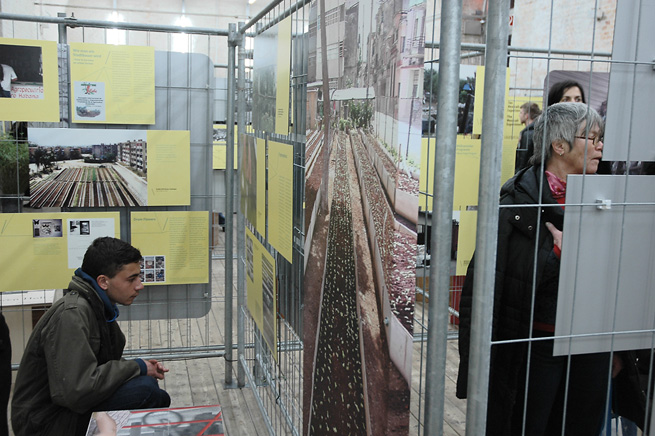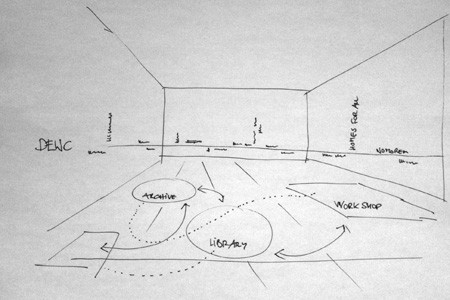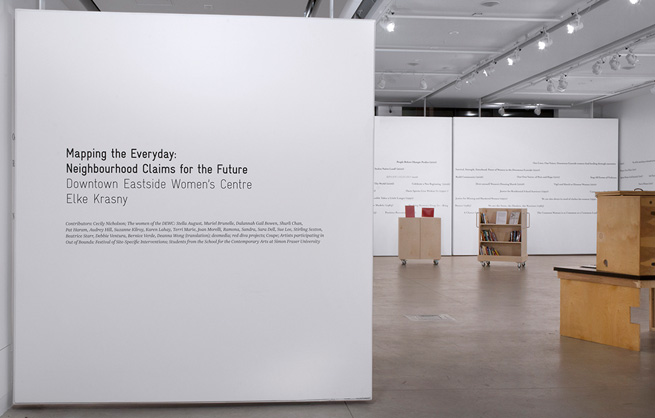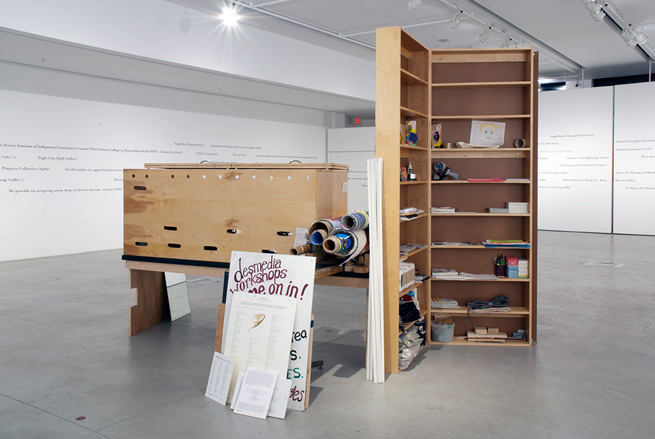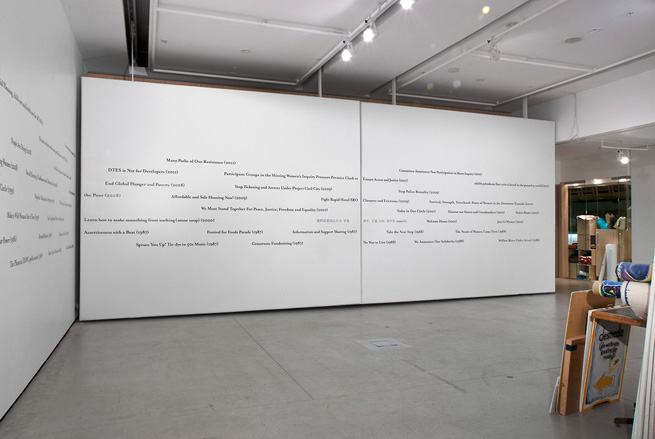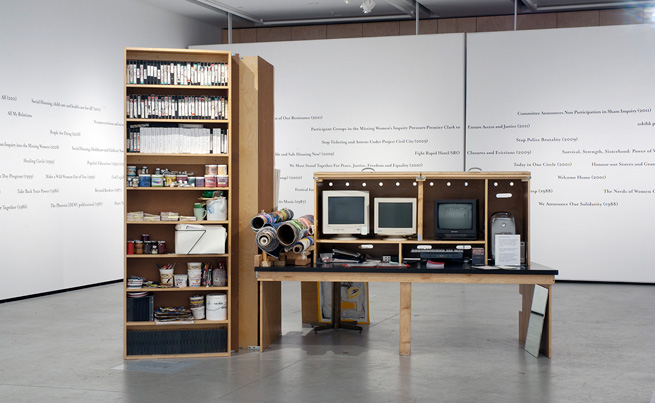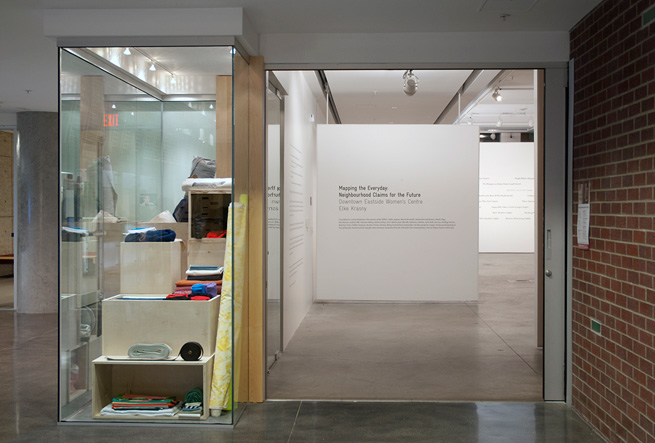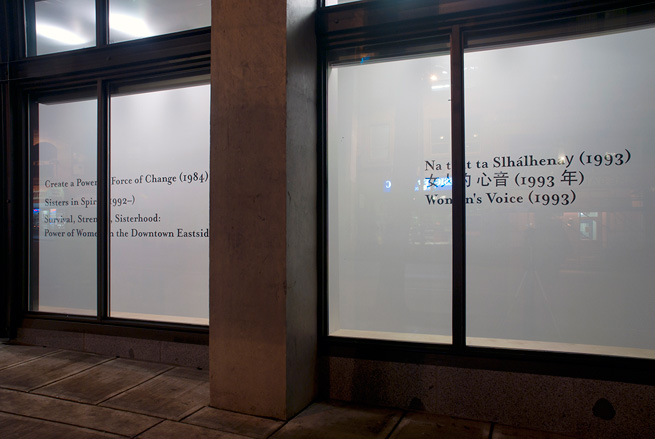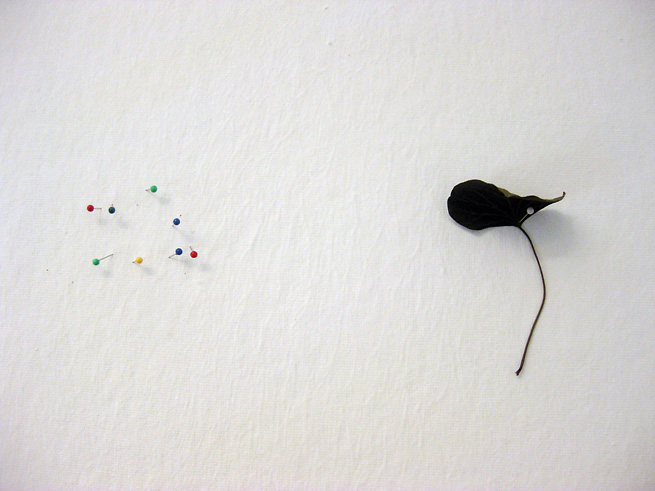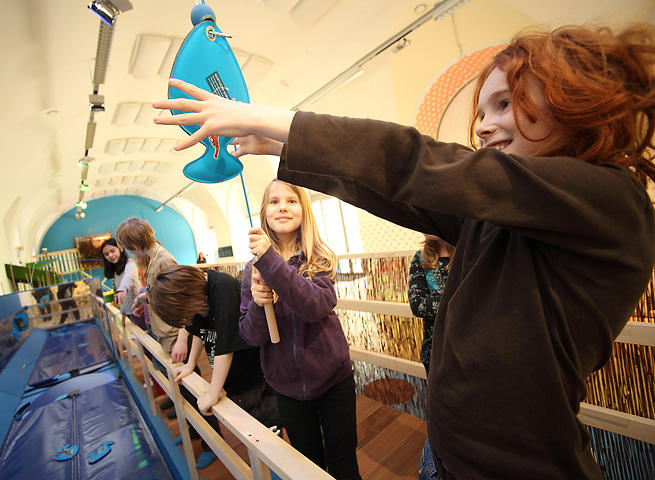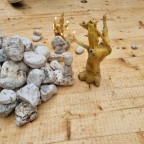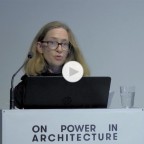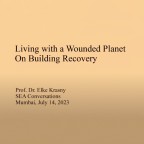Lerchenfelder Straße. Schöne Aussichten?
Symposion: Vorträge, Diskussionen
Datum | Mittwoch, 9. März 2011
Zeitrahmen | 16.30-20.30 Uhr
Ort | 25hours Hotel Wien, Skylobby im Dachgeschoss,
Lerchenfelder Straße 1-3, 1070 Wien
Mit: Thomas Blimlinger, Regina Haberfellner, Sabine Knierbein, Elke Krasny, Veronika Mickel, Wolfgang Primisser, Marietta Schiltz, Brigitta Schmidt-Lauber, Bernd Theis, Estela Tschernutter, Hans Jörg Ulreich, Erol Yildiz u. a. m.
Moderation: Angelika Fitz
Die Lerchenfelder Straße in Wien ist eine Straße der Nachbarschaft, eine Einkaufsstraße zweiter Ordnung, die gegenwärtig und zukünftig vor viele Herausforderungen gestellt ist.
Das Einkaufsverhalten hat sich verändert. Innerstädtische Mobilität unterliegt hohen Schwankungen. Die Schwierigkeiten, eine Identität der Straße zu vermitteln, positive Bilder zu erzeugen und Aufenthaltsqualitäten zu verbessern, sind groß.
Die Urbanität typischer mitteleuropäischer Städte wird durch das Engagement von Geschäftsleuten, UnternehmerInnen, GastronomInnen oder Kreativen getragen, welche die Alltagserfahrung einer lebendigen Erdgeschoßzone ermöglichen. Viele Menschen mit Migrationshintergrund tragen dazu in hohem Ausmaß bei.
Im Rahmen eines eintägigen Symposions unter dem Titel Lerchenfelder Straße. Wie weiter? stehen Gegenwart und Zukunft der Lerchenfelder Straße im Mittelpunkt.
Ausgehend von dem von Angela Heide und Elke Krasny herausgegebenen Buch Aufbruch in die Nähe. Wien Lerchenfelder Straße (Turia+Kant 2010) präsentieren und diskutieren Geschäftsleute, lokale ExpertInnen und Positionen aus der Stadtforschung, dem Immobiliendevelopment, der Stadtgeschichte, der Ethnologie, der Unternehmensberatung und der zeitgenössischen Kunst über Handlungsmöglichkeiten und Zukunftsperspektiven.
Gefragt sind Vorstellungen, Ideen, kritische Zugänge und Fragen für die weitere Entwicklung.
Programm (Stand: 14.02.2011)
16.00 Uhr Begrüßung durch Bezirkvorsteher Thomas Blimlinger (Neubau) und Bezirksvorsteherin (Josefstadt)
einführende Worte durch Christiane Klerings, Angela Heide, Elke Krasny
16.30-19.30 Impulsvorträge der TeilnehmerInnen und anschließende Diskussionen
ab 19.45 Uhr Abschlussgespräch mit allen TeilnehmerInnen
Ende 20.30 Uhr
Ausklang bis 21 Uhr
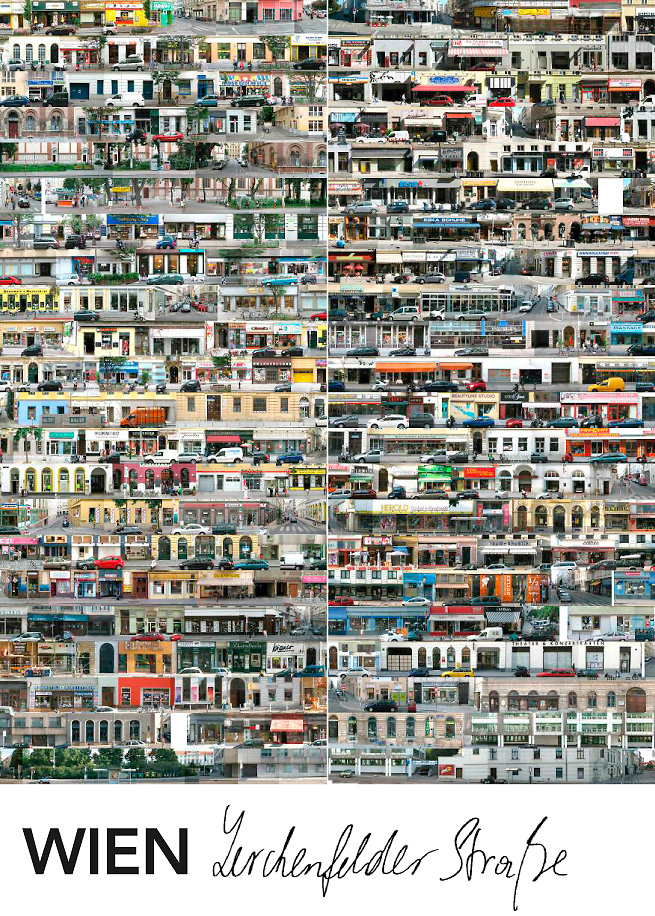
Teilnehmerinnen und Teilnehmer
Regina Haberfellner, Mag., Unternehmensplanerin, Unternehmensberaterin und Soziologin (Universität Wien) mit dem Forschungsschwerpunkt Immigrant Business; 1996-2002 Leiterin des Bereiches Chancengleichheit und Integration am Zentrum für soziale Innovation in Wien; seit 2003 Inhaberin von Soll&Haberfellner Unternehmens- u. Projektberatung mit dem Arbeitsschwerpunkt Krisenprävention und Krisenintervention in kleinen und mittleren Unternehmen
www.soll-und-haberfellner.at
Angelika Fitz arbeitet als Kulturtheoretikerin, Kuratorin und Autorin in Wien; als selbstständige Ausstellungsmacherin im Bereich Architektur, Urbanismus und Kunst verantwortet sie u.a. Projekte für das Architekturzentrum Wien, die Kunsthalle Wien, Secession, Künstlerhaus Wien, das Österreichische Bundesministerium für Unterricht und Kultur, das deutsche Bundesministerium für Verkehr, Bau und Stadtentwicklung, die Europäische Kulturhauptstadt Linz 2009 sowie für das European Union – India Economic Cross Cultural Programme; zwischen 1998 und 2005 hat sie mehrere Projekte im südasiatischen Raum realisiert; 2003 und 2005 war sie Kommissärin für den österreichischen Beitrag zur Architekturbiennale Sao Paulo; zuletzt u. a. die Ausstellungen und Publikationen Wann begann temporär? Frühe Stadtinterventionen und sanfte Stadterneuerung sowie REALSTADT. Wünsche als Wirklichkeit in Berlin; internationale Publikations-, Lehr- und Vortragstätigkeit
www.angelikafitz.at
Sabine Knierbein, Univ. Ass. (PostDoc), Dr. phil. Europäische Urbanistik
Dipl.-Ing. (FH) Freiraumplanung/Landschaftsarchitektur; seit Dezember 2008 mit der inhaltlichen Entwicklung des Arbeitsbereiches für Stadtkultur und öffentlicher Raum (SKuOR), dem strukturellen Aufbau und Management sowie der akademischen Netzwerkbildung auf europäischer und internationaler Ebene betraut (Department für Raumentwicklung, Infrastruktur- und Umweltplanung
Fakultät für Architektur und Raumplanung, Technische Universität Wien); Publikationen der letzten Zeit u. a. Die Produktion zentraler öffentlicher Räume in der Aufmerksamkeitsökonomie. Ästhetische, ökonomische und mediale Restrukturierungen durch gestaltwirksame Koalitionen in Berlin seit 1980. Wiesbaden: VS Verlag für Sozialwissenschaften (2010); Aspern. Einer städtebaulichen Replik Leben einhauchen. Zur Rolle konzipierter und gelebter öffentlicher Räume in der zukünftigen europäischen Stadt. In: Die Instrumente des Städtebaus. citylab Report. aspern Die Seestadt Wiens. S. 70-73
Elke Krasny, Kulturtheoretikerin, Stadtforscherin, Kuratorin und Autorin; Senior Lecturer an der Akademie der bildenden Künste Wien; freie Kuratorin des Architekturzentrum Wien; kuratorische Recherchen zu den Themen Architektur, Stadt, sozial engagierte künstlerische Praxen, kulturelle Identität und Gender zahlreiche Ausstellungen, Publikationen, Walks und Gespräche; internationale Vortragstätigkeit, u. a. in Armenien, Kanada, Kroatien, Deutschland, Island, Italien, den Niederlanden, Österreich, der Tschechischen Republik, Schweiz und Slowenien; Publikationen der letzten Zeit u. a.: Penser Tout Haut. Faire l’Architecture, Centre de Design de l’UQAM, Montréal, 2010 und Dalhousie University Halifax 2011; Annenviertel! Die Kunst des Urbanen Handelns, rotor association for contemporary art Graz 2009-2011; Aufbruch in die Nähe. Wien Lerchenfelder Straße Hg. Angela Heide, Elke Krasny, turia + kant Verlag Wien 2010
Wolfgang Primisser, Unternehmer & designierter Obmann der IG Kaufleute Lerchenfelder Straße
Mariette Schiltz, Künstlerin, Kuratorin (Mailand)
Brigitta Schmidt-Lauber, o. Univ. Prof. Dr., seit Oktober 2009 Vorstand des Instituts für Europäische Ethnologie Universität Wien; Studium der Volkskunde, Ethnologie, Sozial- und Wirtschaftsgeschichte an den Universitäten Kiel, Hamburg, Köln, Promotion 1997 und Habilitation 2003 in Hamburg; danach Gastprofessuren und Dozenturen an den Universitäten Wien, Göttingen, Basel und Zürich und 2006-2009 Professorin in Göttingen; Schwerpunkte u. a.: ethnografische Stadtforschung, Ethnizität und Migration, qualitative Methoden, regionale Ethnografie, Erzähl- und Biografeforschung, Alltagskultur & Alltagsforschung
Bernd Theis, Künstler, Kurator (Mailand)
Estela Tschernutter, lokale Expertin; geboren und aufgewachsen in Lissabon und Luanda; studierte Tourismus und Philosophie; seit 1991 in Österreich, zurerst in Salzburg, seither in Wien; seit 2003 bei der EZA, Fairer Handel GmbH, Weltladen Lerchenfelder Straße 18-24, 2 Kinder
Hans Jörg Ulreich, Immobilientreuhänder (Ulreich Bauträger GmbH)
Erol Yildiz, geboren in Samsun, Soziologe; Studium der Philosophie mit Nebenfächern Pädagogik und Soziologie, ab 1984 der Pädagogik sowie Soziologie und Psychologie im Nebenfach (1996 Promotion; 2005 Habilitation in Soziologie); ab 1990 Tätigkeit als Pädagoge für interkulturelle Jugendarbeit beim Deutschen Familien verband in Köln; ab 1992 wissenschaftliche Tätig keiten u. a. am Seminar für Sozial wissen schaften; ab 1999 Tätigkeit als wissenschaftlicher Assistent an der Erziehungs wissen schaftlichen Fakultät der Universität Köln; ab 2000 Lehrbeauftragter der Universität Hamburg; ab 2005 leitete er das Forschungsprojekt Der Wandel von Quartieren in der metropolitanen Gesellschaft am Beispiel Keupstraße in Köln: Ghetto oder eine Erfolgsgeschichte?; 2006 Vertretungsprofessur in Köln; seit 2008 Professor am Institut für Erziehungswissenschaft und Bildungsforschung an der Alpen-Adria-Universität Klagenfurt, Fakultät für Kulturwissenschaften; zahlreiche Publikationen und wissenschaftliche Aufsätze sowie Heraus gebertätigkeit
Idee, Konzept und Gesamtleitung
Angela Heide und Elke Krasny in Zusammenarbeit mit dem Projekt Lebendige Lerchenfelder Straße und der Gebietsbetreuung Stadterneuerung 6_7_8_9 (Christiane Klerings und Bernhard Mayer)
Unterstützt von den Bezirken Neubau und Josefstadt

